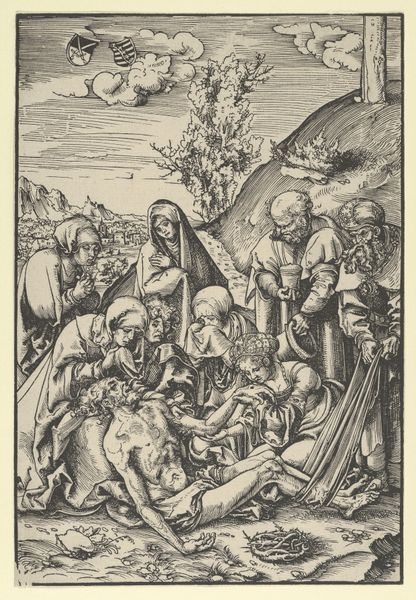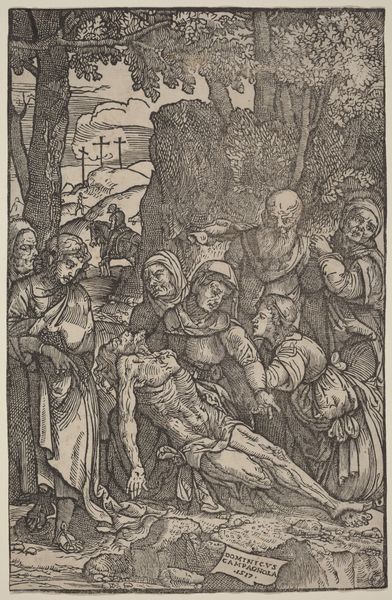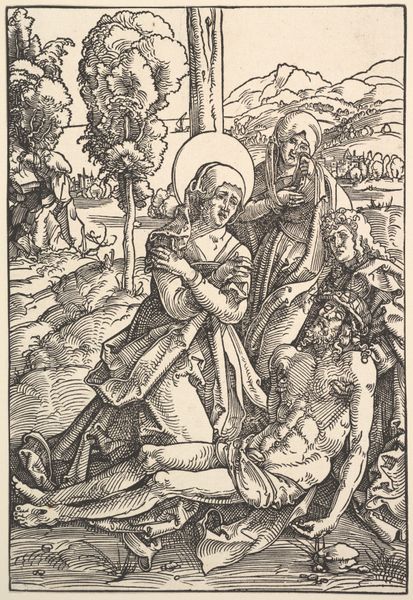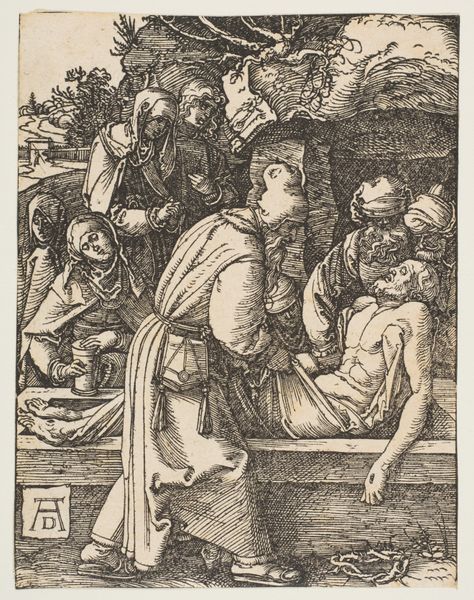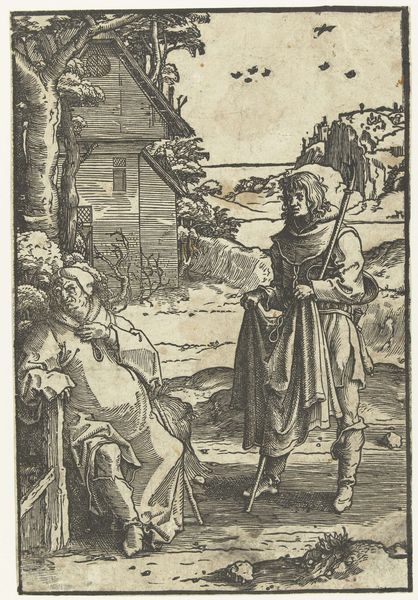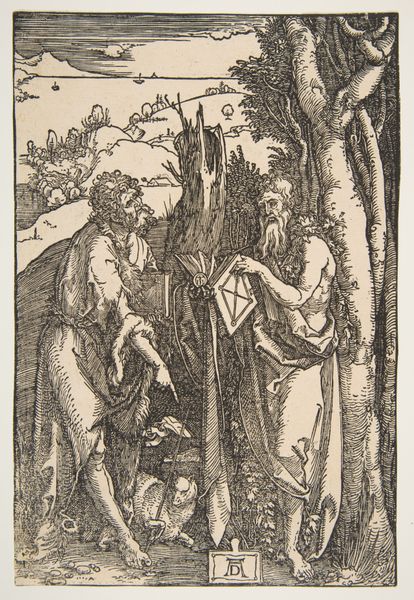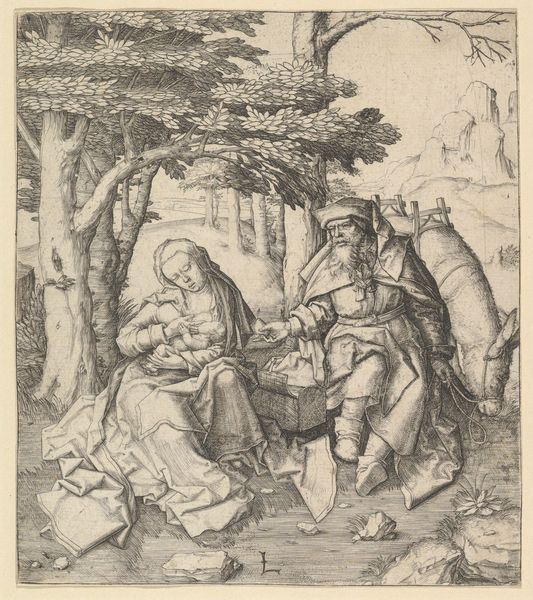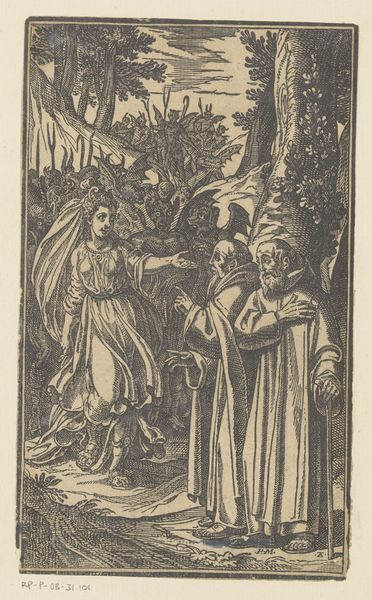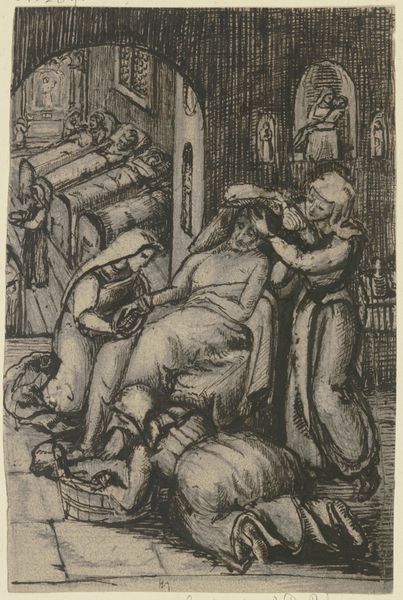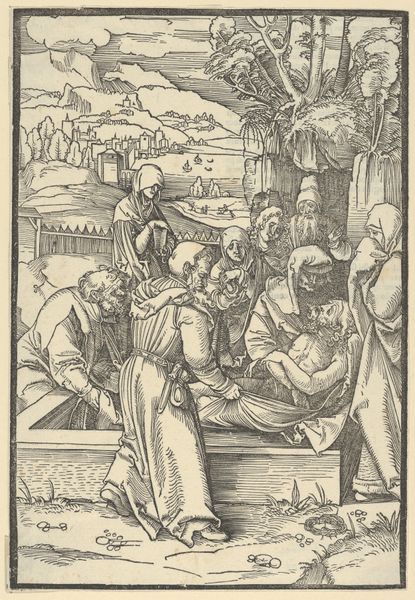
drawing, print, woodcut, pen
#
drawing
#
narrative-art
# print
#
pen illustration
#
pen sketch
#
landscape
#
figuration
#
woodcut
#
pen
#
history-painting
#
northern-renaissance
Dimensions: Sheet: 9 1/8 × 6 3/16 in. (23.2 × 15.7 cm)
Copyright: Public Domain
Curator: Immediately, this woodcut print strikes me as one depicting grief and revelation amidst nature, but the stark monochromatic style makes it all the more devastating. Editor: We're looking at "Pyramus and Thisbe," a piece created around 1509-1510 by Hans Schäufelein, held at the Metropolitan Museum of Art. Schäufelein, working in the Northern Renaissance tradition, depicts a key scene from Ovid's Metamorphoses, popularizing classical themes. Curator: The story behind it adds weight; forbidden love, mistaken identity, leading to tragic suicides... it echoes through the ages. And consider the physicality of this work; each line painstakingly carved into wood, a repetitive, almost meditative process reflecting the cyclical nature of tragedy. Editor: Precisely, the medium—woodcut—would have allowed for the relatively easy reproduction and wide distribution of the image. So what effect did seeing a readily available, affordable print have on popular conceptions of love, loss, and fate at that time? Curator: An excellent point. Images like this helped disseminate humanist values and classical narratives beyond elite circles. The emotionality is laid bare—grief as a shared social experience but did the means of distribution sanitize some of the violence by depersonalizing art through accessibility? Editor: It depends on access and privilege: it would shape the artistic value and perception in ways specific to the cultural values of the class or person in contact with the print. Consider, too, how the linear quality and strong contrasts inherent in the woodcut technique add to the drama, visually echoing the starkness of death itself. It pushes the physical limitations of this print medium in communicating these nuances. Curator: And to reiterate—how these accessible printed images played a role in building a collective European identity steeped in shared cultural narratives that are still alive today. Think how this one artwork is related to not only its means, but also its effect as a device for building shared beliefs! Editor: Definitely. There is something profoundly moving about the enduring power of simple materials and skillful carving to convey such complex emotions, both then and now. Curator: Yes, and something sobering about how tragedy transcends time through the art that captures it.
Comments
No comments
Be the first to comment and join the conversation on the ultimate creative platform.
